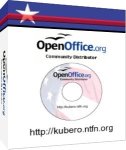Supporters and critics generally agree that PowerPoint's ease of use can save a lot of time for people who otherwise would have used other types of visual aid -- hand-drawn or mechanically typeset slides, blackboards or whiteboards, or overhead projections. That same ease of use means that others may be encouraged to make presentations who otherwise would not have used visual aids, or would not have given a presentation at all. But as PowerPoint's style, animation, and multimedia abilities have become more sophisticated, and as PowerPoint has become generally easier to produce presentations with (even to the point of having an "AutoContent Wizard" suggesting a structure for a presentation), the difference in needs and desires of presenters and audiences has become more noticeable.
One major source of criticism of PowerPoint comes from Yale professor of statistics and graphic design Edward Tufte. In his essay The cognitive style of PowerPoint, Tufte criticizes many emergent properties of the software: * Its use to guide and reassure a presenter, rather than to enlighten the audience; * Unhelpfully simplistic tables and charts, resulting from the low resolution of computer displays; * The outliner causing ideas to be arranged in an unnecessarily deep hierarchy, itself subverted by the need to restart the hierarchy on each slide; * Enforcement of the audience's linear progression through that hierarchy (whereas with handouts, readers could browse and relate items at their leisure); * Poor typography and chart layout, from presenters who are poor designers and who use poorly-designed templates and default settings; * Simplistic thinking, from ideas being squashed into bulleted lists, and stories with beginning, middle, and end being turned into a collection of disparate, loosely disguised points. This may present a kind of image of objectivity and neutrality that people associate with science, technology, and "bullet points".
Although many of Tufte's points seem to be well-taken, a number of experts strongly disagree with his analysis for a variety of reasons - see the article "Five Experts Disagree with Tufte on PowerPoint" here (http://www.sociablemedia.com/articles_dispute.htm). Cliff Atkinson, a management consultant at Sociable Media (http://www.sociablemedia.com), has written extensively about organizational issues related to PowerPoint, including interviews with experts from the fields of marketing, cognitive science, law, information design, and more (http://www.sociablemedia.com/credential_articles.htm).
University of Toronto management professor David Beatty says: "PowerPoint is like a disease. It's the AIDS of management." He advises spending 85 percent of one's time on figuring out what to say, and only 15 percent on how. He also reports that 3M has strongly discouraged the use of PowerPoint because "it removes subtlety and thinking", and the company believes that it causes people to focus on pretty pictures rather than doing what they are paid to do. Other prominent executives in the information technology industry have declared their offices "PowerPoint-free zones".
Peter Norvig created a PowerPoint version of Abraham Lincoln's Gettysburg Address as a tongue-in-cheek example of the presentation style often associated with PowerPoint. Norvig published his slides on his website[1] (http://norvig.com/Gettysburg/) in 2000. It was subsequently picked up by several early blogs as well as the Wall Street Journal as an illustration of how a carefully crafted and successful speech can be turned into a disjointed set of garish slides, which even included gratuitous data plots.
Introduction | Operation | History | Cultural Effects
OpenOffice.org - the New Office Software Solution
Before you purchase Microsoft® Office, please consider this office suite.
 Features | Screenshots | System Requirements |
Only $9.95
Reg. $40 30-day Money Back Guarantee |
|
Main Page
Microsoft® and Windows® are registered trademarks of Microsoft Corporation in the United States and other countries.
Copyright © 2004 kubero.ntfn.org

